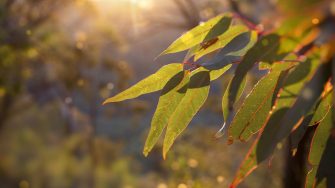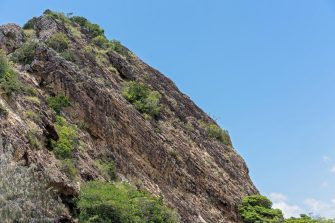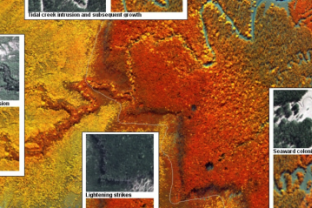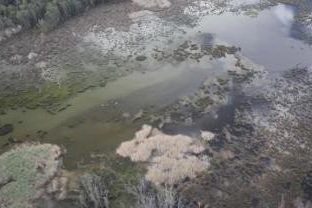
In tropical and subtropical savannas of Australia, changes in the tree species composition occur within 'intact' woodlands in response to human-related activities (e.g., selective logging or removal, grazing) and natural events and processes (e.g., dieback from drought, regeneration following wet periods, fire) which might be exacerbated by climate change.
Studies within the Injune Landscape Collaborative Project (ILCP) Research Area established that trees that were delineated and identified to species using a combination of lidar and hyperspectral data acquired in 2000 had experienced significant dieback in 2006, which was near the peak of an intense drought in Queensland (Lucas et al., 2008a). As with other studies (e.g., Fensham and Holman, 1999), there was a differential response among species. For example, many large and mature rough barked apples (Angophora floribunda) had died, but smooth barked apples (A. leiocarpa) were unaffected. In other plots, changes in the structure, AGB and species composition were detected because of regrowth from succession and following fires and clearing. These analyses highlighted the dynamic nature of the forests in response to a wide range of human-induced and natural events and processes. In 2009, a second set of full waveform lidar (RIEGL LMS-Q560) and digital aerial photography (< 1 m spatial resolution) was acquired across the site by Airborne Research Australia (ARA), Flinders University. Comparisons between the lidar data from 2000 and 2009 indicated variable losses of trees and strata over the intervening period, reflecting impacts of human activities and natural events and processes associated with the drought and fire activity, but also regeneration and expansion of crowns. In 2010, a different climate extreme was experienced with Australia (and particularly Queensland), recording some of the highest rainfall for many decades. As a consequence, vegetation productivity increased in many areas, but the impact on the composition of forests was uncertain. Therefore, by acquiring lidar and optical data in the future, an opportunity to quantify the impacts of changes since 2000/2009 can be provided. Being able to detect and quantify such changes provides critical information for vegetation management policy, emergency (fire) services and individual landholders who manage their land.



